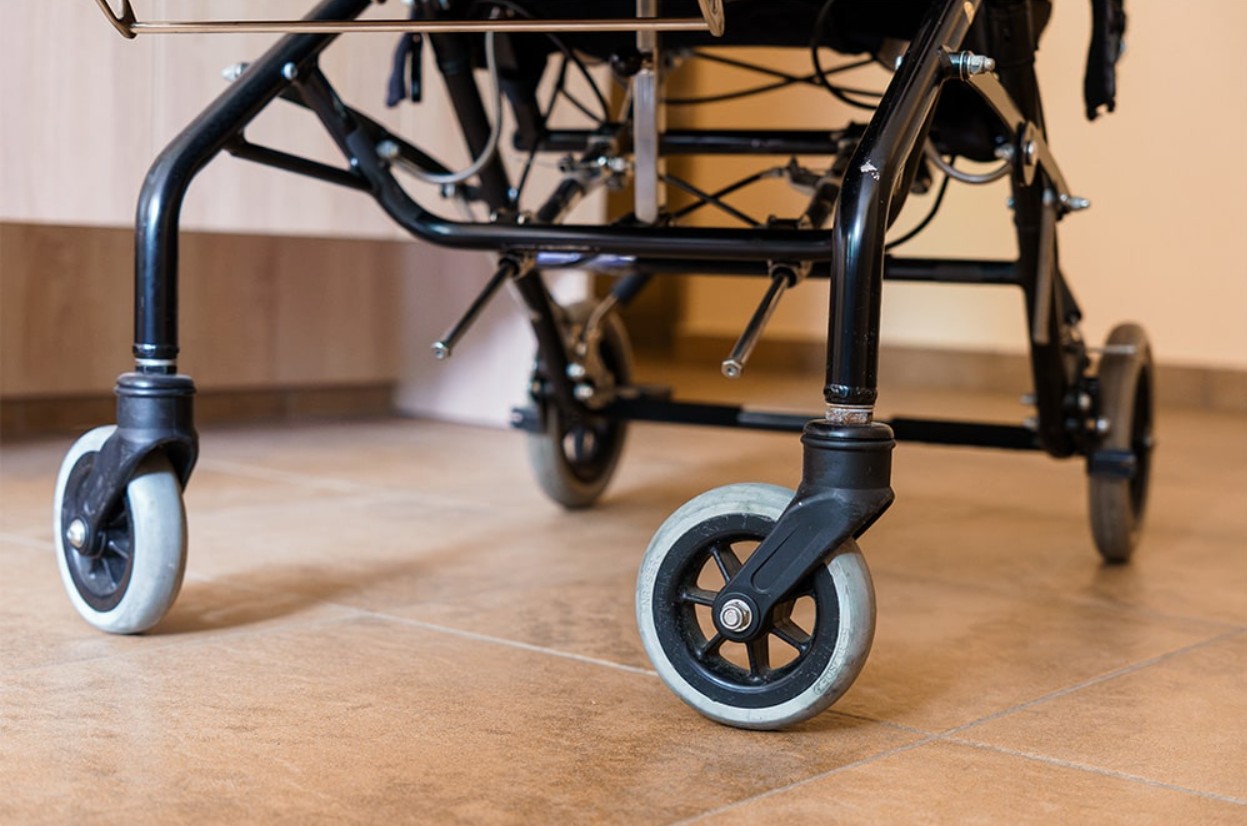
Quick Summary:
Whether you’re looking for a wheelchair for yourself or a loved one, it can be valuable to weigh the options available. Before deciding on a wheelchair, it’s important to assess your circumstances and mobility level.
This blog explores the kinds of wheelchairs and their features. Learn about the factors to consider before selecting a wheelchair, and discover which type will best meet your needs.
Click a link to jump to the section.
Introduction
Wheelchairs are helpful mobility support solutions for traveling a range of distances. When choosing a wheelchair, users should reflect on their needs. These might include portability, durability, dimensions, and power.
Consider where and how you plan to use your wheelchair. Will someone be pushing your chair, or will you be propelling it yourself? Will you need any adjustments or accommodations?
Selecting the right wheelchair is important for user comfort and independence. Each kind of wheelchair has benefits for unique users and their abilities. In this blog, we will discuss wheelchair function by type. We will be looking at manual wheelchairs, transport wheelchairs, battery-powered wheelchairs, pediatric wheelchairs, and specialty wheelchairs.
1. Manual Wheelchairs
Manual wheelchairs allow individuals to move by themselves or with someone pushing from behind. Here are a few manual options suited for various needs:
- Folding wheelchairs for transport and storage
- Reclining wheelchairs for comfort over extended use
- Self-propelled wheelchair options for independent mobility
- Heavy-duty bariatric wheelchair features for enhanced durability
Manual wheelchairs are great for people who have a helper or can use their upper body strength to move the chair on their own.
These kinds of wheelchairs are a popular choice because they offer freedom of movement and increased independence. They also tend to be more cost-effective and are easier to maneuver in tighter spaces.1


2. Transport Wheelchairs
With small wheels and handles, lightweight transport chairs are designed for short-term use. Rather than being self-propelled, they are typically pushed forward by a helper.2 Also known as transfer wheelchairs, these are excellent wheelchairs for caregiver assistance. They work well in small indoor spaces and for short outings.
Transport chairs are helpful for traveling. People often use these in airports and hospitals because they're convenient and easy to maneuver.
For other portable mobility options, you might also consider foldable, compact wheelchairs for travel. These feature a folding mechanism that allows you to stow the chair away easily when you don’t need it. A foldable wheelchair can be useful for those who travel often or need a mobility aid for occasional use.
3. Power Wheelchairs
Let’s discuss portable power chairs for mobility. These are great aids for those without the strength or ability to self-propel a chair, such as those with mobility impairments.
Joystick-controlled wheelchairs allow a user to control their whereabouts by pushing, pulling, and releasing a joystick. The wheelchair moves forward in the direction of the joystick and will move faster the further it is pushed.3
Plenty of battery-powered controls exist for those unable to use a joystick. Here are a few types of power controls and how they work:
Users operate speech controls with voice commands.
- Head controls feature a headrest with switches.
- Foot controls use pedals at the footrest.
- Chin controls feature a switch near the chin.
- Sip and puff controls work as the user breathes into a tube.4
Power wheelchairs provide users with increased independence and convenience. Because of their effortless operation, many opt for electric wheelchairs for home use or outdoor travel.
Heavy-duty or all-terrain chairs tend to have a bigger frame and stronger wheels. They also have more power, making them perfect for extended use and rugged terrain. Portable power chairs, on the other hand, may be compact and foldable for easier travel and storage.
4. Pediatric and Specialty Wheelchairs
To suit a specific height and weight, you can purchase custom wheelchairs for children or individuals with unique needs.
For example, stand-up frame wheelchairs are helpful for those unable to stand on their own. These are helpful for children with cerebral palsy or in physical therapy, as they offer extra support in standing. Stand-up wheelchairs may even improve circulation and bladder or muscle strength.5
You can find further adaptive mobility equipment that accommodates unique user requirements. This includes tilt-in-space, postural support, and specialty seating in wheelchairs. You can adjust and personalize your wheelchair for different measurements and abilities. This allows users of all ages to find increased comfort and mobility in their wheelchair.
5. How to Choose the Right Wheelchair
When choosing the right mobility device, you’ll want to assess your specific needs. Factors to consider in wheelchair buying include budget, mobility level, caregiver support, and environment (indoors vs. outdoors).
Plan to discuss your wheelchair needs with your doctor. You will receive a wheelchair assessment. This will look at your body type, skin health, strength, posture, sitting balance, and any ongoing conditions.6
When looking at wheelchair fitting and sizing, consider weight capacity, seat width, and seat depth. The seat should be wide enough to comfortably fit the hips, but narrow enough for the wheels to stay in reach. The depth should be two inches short of the back of your knees to stimulate blood flow in the legs.7
With these factors in mind, you’ll be on your way to finding the perfect wheelchair for you.


Conclusion
When selecting a wheelchair, users should prioritize comfort, function, and independence. Review factors like portability, frame, and power type. This will help you to determine which mobility aid is best for your circumstances.
If you’re seeking a portable option, look for a foldable or lightweight wheelchair that is easy to store and transport. For outdoor use, select a wheelchair with sturdy enough wheels to navigate rough surfaces.
Consider your long-term wheelchair needs. Your chair and its frame should suit your size and abilities. You may want to consult with your doctor or a care team to help guide you in your decision.
Explore our variety of wheelchairs to find the best mobility aid for your needs.
Footnotes
1 "United Access. (2023, May 30)." 5 Benefits of Choosing a Manual Wheelchair
2 "Triumph Mobility." Wheelchair vs Transport chair: do you know the difference?
3 "Freedom Mobility Center, Inc. (2019, December 24)." Your Guide to Wheelchair Joystick Controls for Your Complex Rehab Chair
4 "Silver Cross." All About Power Wheelchairs
5 "CSR 1686. (2018, September 17)." Types of Pediatric Wheelchairs Karman Healthcare.
6 "Whitten, C. (2021, August 11)." How to Choose a Wheelchair. WebMD.
7 "Wound Care Solutions, Inc. (2017, August 17)." The 7 Key Measurements to Determine Proper Wheelchair Fit

